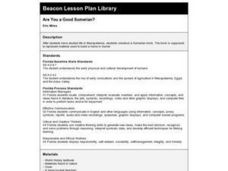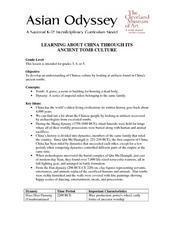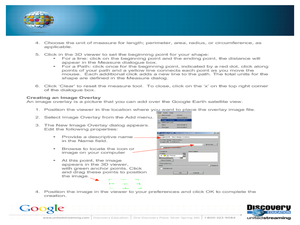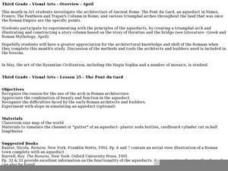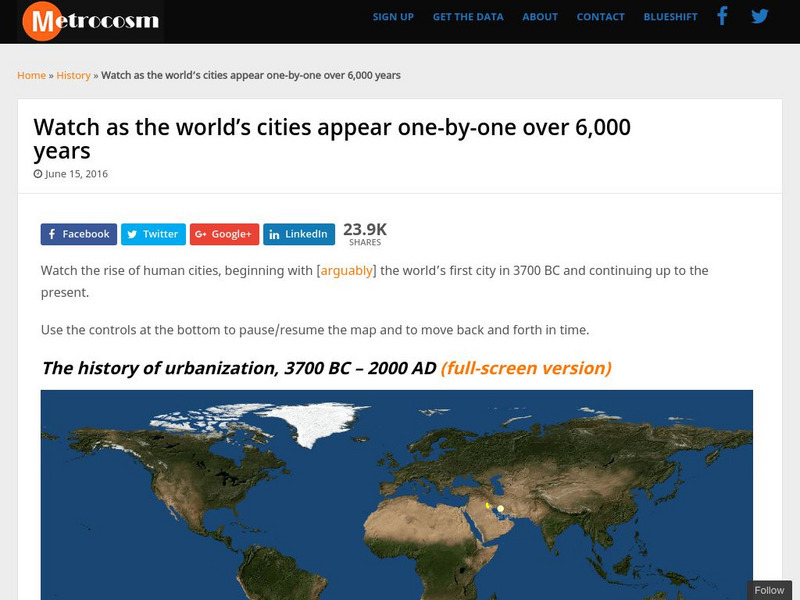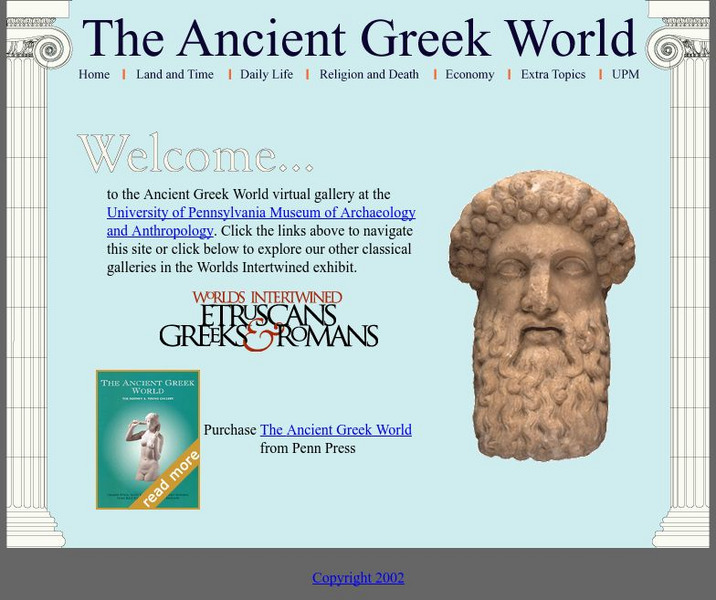Curated OER
Silk: Scientific Inquiry Through Chinese Art
Students investigate the many uses of silk in Chinese society through in-class experiments, group projects, and hands-on learning in this cross-curricular lesson. There are four main activities included in this lesson.
Curated OER
Babylonian Square Roots
Students are introduced to a method for finding square roots used by the Babylonian people of Mesopotamia. The method involves dividing and averaging, over and over, to find a more accurate solution with each repeat of the process.
Curated OER
Hammurabi's Code of Laws
Students explore why the need arose for laws to govern society, comparing and contrasting hunter/gatherer societies vs. agrarian societies. They write letters to the editor of the Babylonian Times, discussing their opinion of Hammurabi's...
Curated OER
Let's Spice It With Pepper
Pupils identify and locate the areas in which pepper and spices orginated. On a map, they locate the areas and write the name of the spice that is found there. They use historical events to trace its route to the Americas. They answer...
Curated OER
Foundations of American Government
Fourth graders explore the origins of American government.
Curated OER
THE FABLE OF THE FAINTING GOATS
Students practice telling time while reading a story about a fainting goat. They write their own story about a fainting goat. Students write letters to the International Fainting Goat Association, asking for more information about...
Curated OER
Fable of the Fainting Goat
Students read a story. For this telling time lesson, students complete a worksheet where they must practice their knowledge of telling time. Students read a fable and answer time questions as they read.
Curated OER
Colonial America: Causes Of The American Revolution
Students examine the causes of the American Revolution. In this colonial America lesson, students read handouts regarding the sequence of events that led to the commencement of the war. Students complete the provided worksheets and...
Curated OER
Are You a Good Sumerian?
Studetns, after studying life in Mesopotamia, create a Sumerian brick.
Curated OER
Cultural Calendar
Students design their own cultural calendar. In this calendar making lesson, students decide on a culture for a calendar theme and discuss how calendars differ from the US calendar. Students create their own calendar using a...
Curated OER
Ancient Mesopotamia
Students locate ancient Mesopotamia on a map. They examine the religion, government and the development of writing. They write and draw pictographs and cuneiform writing. They create a class book based on their investigations.
Curated OER
China's Ancient Tomb Culture
Students research and discuss Chinese history through the examination of ancient tomb artifacts. Emphasis is placed on the creation of student posters displaying "what they would put in a tomb".
Curated OER
Building the Great Wall of China
Young scholars, in groups, research various Chinese Dynasties. They present their research in the form of Great Wall.
Curated OER
Great Explorers
Pupils research an explorer and present a multimedia presentation on the explorer. For this United States explorers lesson, students watch a video about Lewis and Clark. Pupils use Google Earth to study their journey and keep a KWL chart...
Curated OER
Mathematical Contributions By Women
Third graders explore the contributions of women to mathematics by writing a research paper, presenting a summary to their peers, and sharing an activity with their peers. They use a variety of reference materials to gather information...
Curated OER
Visual Arts - Overview - April
Third graders investigate the architecture of Ancient Rome, The Pont du Gard, an aqueduct in Nimes, France; The Pantheon and Trajan's Column in Rome; and various triumphal arches throughout the land that was once the Roman Empire are the...
Curated OER
Times Are Changing
Third graders study the need for trade, cultural and intellectual achievements. They study scientific and technological advancements emphasizing how these achievements affect modern day.
Curated OER
My How Things Have Changed
Eighth graders discuss the impact geography had on hunter-gatherer societies, their toolmaking. They work in groups to create a Web page that links pictures of artifacts to explanations about what the artifact tell us about the lives of...
Curated OER
Astronomers
Students explore the profession of astronomy. In this social studies lesson, students read articles on astronomers contributions to society and history. Students reference the Bible for recorded astronomies impact on the...
Curated OER
Exercise for Writing a Summary Paragraph
High schoolers examine how to write article summaries of abstracts. In this writing skills lesson plan, students edit the noted sections of an abstract that is already written on the Old Testament Abstracts.
Georgia Department of Education
Ga Virtual Learning: World His: Technological and Environmental Transformations
World History learning module explores the concept of civilization while examing the culture and contributions of the Ancient River Valley Civilizations.
Other
Metrocosm: Watch as the World's Cities Appear One by One Over 6,000 Years
Observe the rise of civilizations from 3500BC to the present with this "living" map. See where the first cities developed and watch as civilizations spread across the world.
Penn Museum
Penn Museum: Ancient Greek World
Massive site for information on the ancient Greek world. Follow the navigation at the top of the page for detailed sections on time periods, daily life, religion and death, economy, and more. Each section includes pictures of artifacts...
Smithsonian Institution
Smithsonian Magazine: First City in the New World?
An account about Caral, Peru that suggests there was a civilization present in Peru much earlier than was previously thought. The article describes Caral as an ancient city that was flourishing at the same time the Great Pyramids were...










